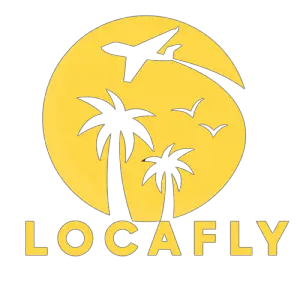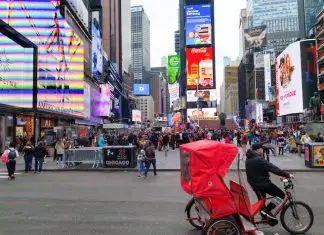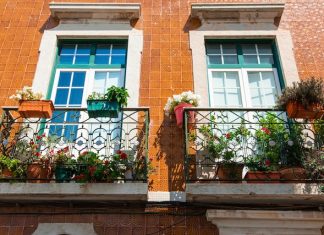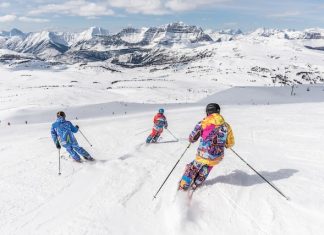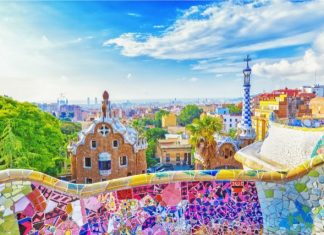Our first international holiday together. As my wife has already visited Europe, we decided to travel to Thailand and discover the country and its culture together. We used a travel agency to book our flights and hotels. The advantage was that we were picked up at the airport and decreased off at the hotel. However, being the first time outside my country, I needed the assurance that I would get to my hotel.
Those days the internet was starting, and information about your destination was not as freely available. We got brochures from travel agencies, bought a book on Thailand, and talked to people who had previously visited Thailand for information. Today this can all be done without leaving your chair; Google it.
After a couple of weeks, we knew what we wanted to do and see:
- Elephant trek in the forests
- The small/home industries area in Chiang Mai
- Buy clothes – lots of it
- Floating market
- Visit some of the Buddhist temples
- Stay on an Island – Phuket
- See the caves in the islands close to Phuket
- Visit Phi-Phi island and some famous islands from films like “James Bond” and “The Beach.”
- Snorkel in the clear water
After discussing this requirement with our travel agent, we booked our flights for early April on Singapore Air, stayed in Singapore for three nights, then flew to Chiang Mai in the far north of Thailand. After three nights in Chiang Mai, we flew to Bangkok and stayed two nights. From Bangkok, we flew to Phuket and stayed there for four nights. Then back to Singapore and that same night back home. A total of 14 days away from home.
Chiang Mai
We landed at Chiang Mai airport just after 10H00. We found the guide relatively easily and were at our hotel before we realized the heat was above 40 ºC. Dolly, our guide, offered to book us into our room. While we drank a refreshing lemongrass tea, Dolly completed the formalities at the front desk, and we were on our way to the room. After we were refreshed, we met up with Dolly in the reception area and discussed our requirements.
Having done our homework, we knew what to expect to pay for our excursions. Dolly offered us the Elephant excursion, with lunch included, at a lower price. She also offered us a tour of the home industry area at a price below what we expected. We booked the two tours with her for the next two days. For that afternoon, we were recommended to do a half-day tour of the Temple on the mountain (Wat Doi Suthep).
The Temple on the mountain is on top of a mountain outside the city. A typical Buddhist temple and a nice view over the city. The interesting accident was the Jade factory/museum next to the Temple. The entrance was free, and we were first shown a video on the Jade trade. I left there as a semi-expert on Jade. Where it was mined in China and brought to Thailand, where it was polished and worked into jewelry to the final products on display. The whole Jade industry in a nutshell. The most interesting was that Jade came in many colors. One small (and cheap) jade elephant in my wife’s jewelry box is a silent reminder of that day.
The Elephant trek was just as insightful. We started by demonstrating how the elephant and its handler work together. Then some tricks from the elephants, including an elephant painting a flower on a canvas. Then it was our turn to ride on the elephant’s back through the river and the forest to a small settlement where the handlers stay. Here we could buy bananas and feed the elephant. At the low prices they asked, nobody complained about buying the elephant’s food from the owner of the elephant to feed it. After the elephant ride, we traveled on floats downriver to a nearby hotel. Here we had lunch – a typical Thai buffet. On our way back to the hotel, we had time to stop at an orchid nursery—what a sight.
The home industries tour was just as amazing. We started with the silk production line – my silk tie collection is a reminder. Then it was the silver smiths followed by the paper umbrella makers. In primary school, our daughters got an umbrella: wood carving, carpet weavers, and many more. Anything you want is made in the area and sold at low prices, which made us feel guilty.
During the evenings, we visited the night market—a shopper’s paradise. We found out later that prices in Bangkok were much higher than in Chiang Mai. We ate at different restaurants. The food was always fresh and well prepared. The freshest food was probably at the restaurant, where we had to choose our fish from a giant fish tank. It is netted out of the tank, cleaned, cooked, and served within thirty minutes. We discovered a whole new world of food -Thai. We also walked in the old city – the most temples in a square mile you will ever see.
Things we recommend in Chiang Mai:
- Elephant Safari
- Wat Doi Sutep and the Jade factory
- Home industries – to see how it is made
- Walk the old city
- Night market – for bargain hunters
- Thai cooking classes
- Visit at least some of the temples – the statues and wood carvings are out of this world
- Forest canopy tour
Bangkok
Bangkok was supposed to be our shopping destination. (We discovered too late that Chiang Mai was cheaper.) It is one of the biggest cities that we have visited. The underground train network is sufficient; buses are on time. Everything works as expected in a European city. There are markets all over the city. Westerners will buy bales of clothing from the vendors, pay for it and then only give their hotel and room number for delivery. In the evening, there are piles of merchandise in front of every hotel room door, waiting for the owner to return and take it into the room. Coming from South Africa, we had it difficult to believe in honesty.
We also booked a tour of the floating market. On our way to the floating market, we stopped at a place where they manufacture coconut sugar. The floating market had an abundance of people. All are trying to get onto a little row boat to get to the merchandise. It is unorganized chaos on the water. People on boats are trying to hassle better prices from people on other boats. It is definitely something to experience if you get the chance. This is for the experience, not the bargains, as in Chiang Mai and Bangkok.
Another place to visit is the Royal Palace. The grounds consist of a temple, palace, and various other buildings. The architecture is typical of Thailand, with mosaic tiles on most of the walls. The wood carvings in the buildings are also very well done with the finest detail visible—worth the small entry fee.
We heard about the Golden Buddha. This 5 500 kg solid gold statue is situated in Wat Traimit in Bangkok. At some point in history, the statue was covered with plaster to protect it from being taken as loot during the war. In 1955 the statue was moved, the ropes broke, and the statue was dropped. Parts of the plaster were dislocated, and it was discovered that the Buddha was made of gold. Well, we had to
see it. The statue was there in the Temple, without any guards to protect it. It was amazing. Few people have seen so much gold in one place. Worth a visit, if only to see the gold.
Bangkok is not one of the cities we would not necessarily want to visit again, but we are glad we went there. We left Bangkok feeling positive about the world. Like the rest of Thailand, the people are friendly and always smiling. There are lots to see, temples, palaces, markets, statues and much more.
Our recommendations for Bangkok are:
- Shopping – if you didn’t visit Chiang Mai
- The Royal Palace
- The madness of the floating market
- The Golden Buddha
- Some more shopping
Phuket and surrounding Islands
The perfect ending to a very intensive holiday. White sandy beaches, idyllic little islands, and Songkran – Thai new year. Unplanned, we visited Phuket while the Songkran festivities were at a peak. Fifteen months after the tsunami caused havoc in the area when we arrived, some traces of the tsunami reminded us of the water’s power. However, most of the island was prepared. Buildings were rebuilt, and people were living normal life again. We were worried at first but soon realized that the locals were prepared if it ever happened again. Sirens were installed. Tsunami safety routes were marked.
Two of the days we spent on the beach and snorkeling along the coral reefs. Although the reefs were damaged, the fish and other sea creatures were still in abundance. Wondering through Phuket town or bargaining with vendors at the market. The other two days were excursion days.
Our first trip was to Phi-Phi Islands on a speedboat. We sat on the beach where Leonardo de Caprio was fighting a shark in the movie “The Beach.” Then we visited a bay on the other side of the island with turquoise-colored water. I have never seen water like that again—lunch at a hotel on the other island. (Phi-Phi islands consist of two islands). On our way back to Phuket, we stopped at a sandy island in the middle of nowhere, snorkeled for an hour, and then continued our journey to Phuket.
The next trip was even better. This time it was a slower boat. The lower deck had a kitchen and storage area for inflatable canoes. Guests were seated on the upper deck. After a stopover at “James Bond Island,” named after one of the James Bond movies filmed on the island, the tide was low enough to enter the caves. Two people per inflatable canoe. I was worried about the rowing, but fortunately, each canoe had a rower. Our canoe was
Skillfully guided through caves on the island. In places, the roof was low and we had to lie down in the canoe. Then suddenly we were in the open again. The caves were more like tunnels leading to the island’s inside. Absolute silence greeted us. The rock walls, more than 50 m high, blocked the sound from the sea. Once a little bird twittered and flew off. Someone shouted. It echoed a few times, and then it was silent again.
When we returned to the boat, lunch was ready. Traditional Thai dishes were prepared on the boat. A lovely meal to end a lovely trip. On both trips, fruit, cold drink (soda), and water were freely available. The staff was all friendly and all could speak English. On the cave tour, the tour leader greeted all the people on the boat in their own language.
We recommend the following:
- Canoe cave explorer
- Phi-Phi island tour
- Visit in April – Songkran, and the peak season ends in March. The rainy season normally starts in late April/early May – snorkeling is at its best before the rainy season starts and the rivers cloud the water.
- Elephant safari – if you missed it in Chiang Mai.
General
Thailand is a friendly country. It deserves the nickname “Land of Smiles.” The currency (Baht) is weak against most other currencies, so prices are low. Peak season is from November to March. This period is also known as the dry season. April to October is the wet season, with the highest rainfall from June to August.
On our last visit, we found that Phuket became much more commercialized. As a result, there are many foreign vendors in the markets, and it was impossible to negotiate prices down as much as in the past. Previously we had a target to buy at the vendors at a price below 66% of the original asking price. On our last visit, this was only sometimes possible.
There are also many other idyllic destinations in Thailand that we did not visit and more destinations are being added annually. For example, Koh Samui (Samui island) was an undeveloped island twenty years ago, now it is one of the most popular destinations for holidaymakers. Another popular destination is Krabi, a coastal province near Phuket. So before you book, do your research on where you want to go.
Where else will you get a cheap holiday among friendly people with amazing places to see and unique food to eat? Truly the only country of its kind.
Happy holidays
